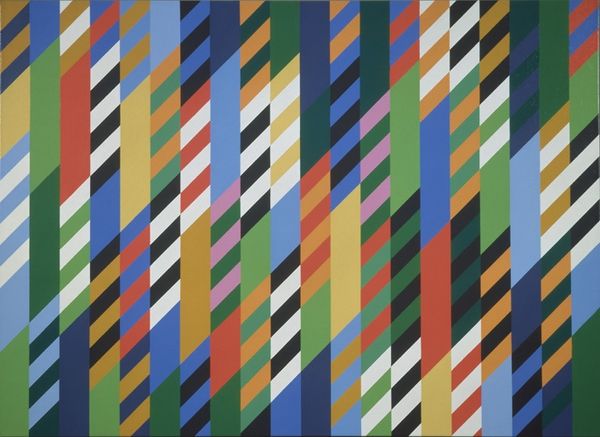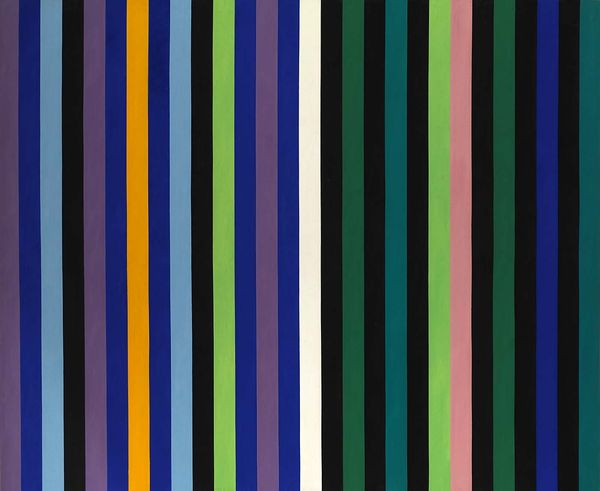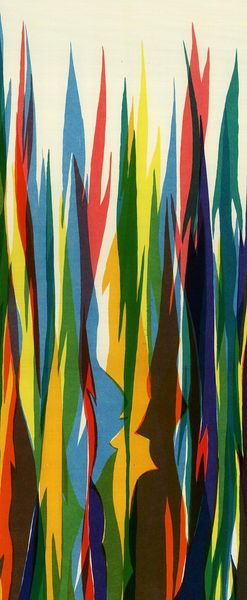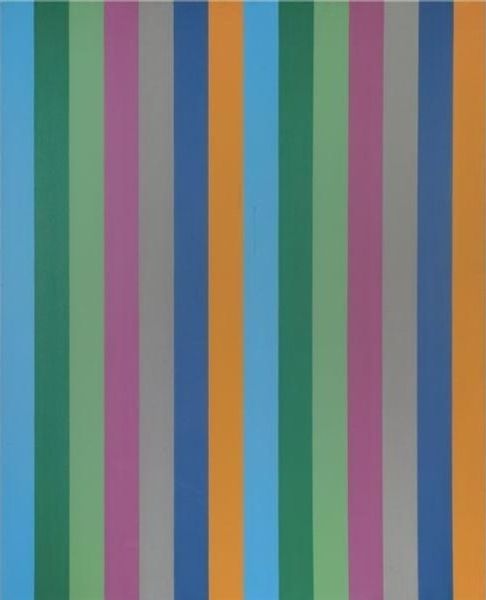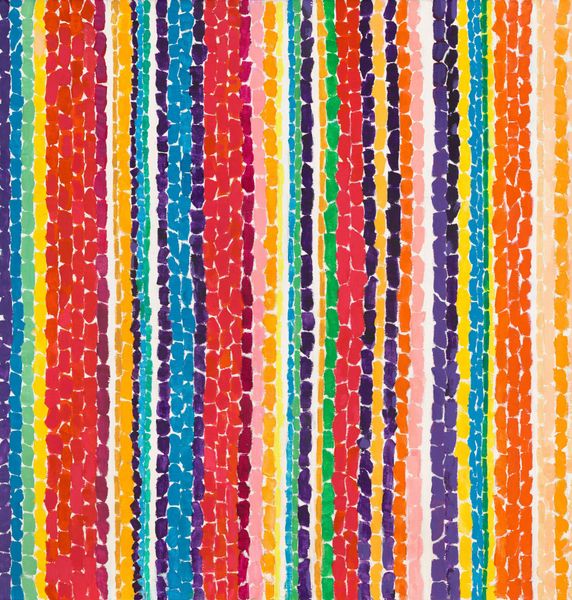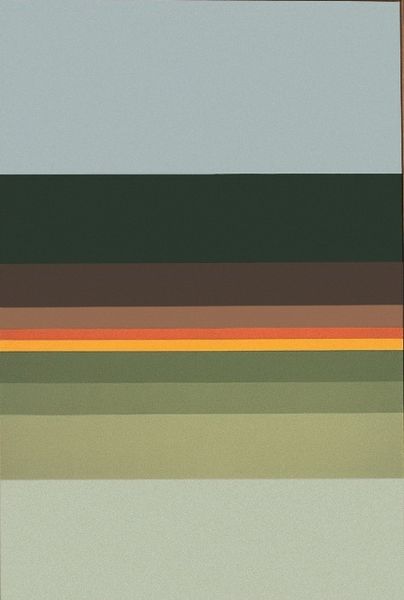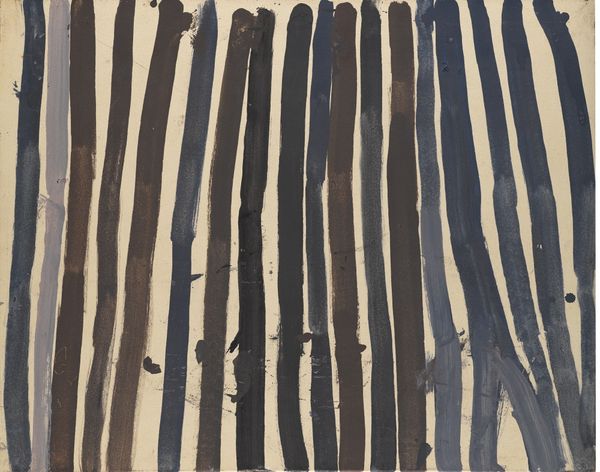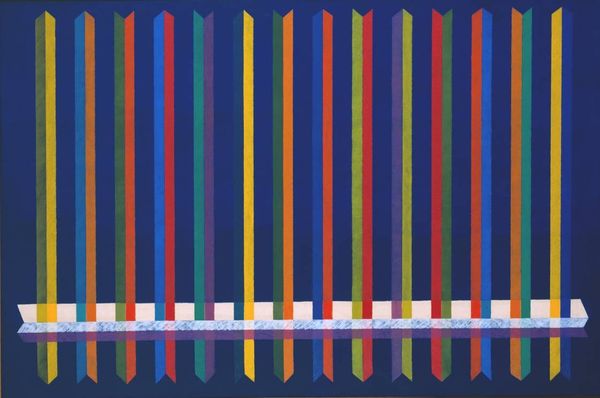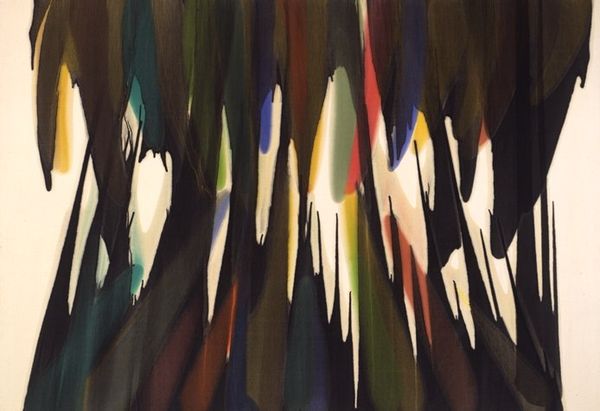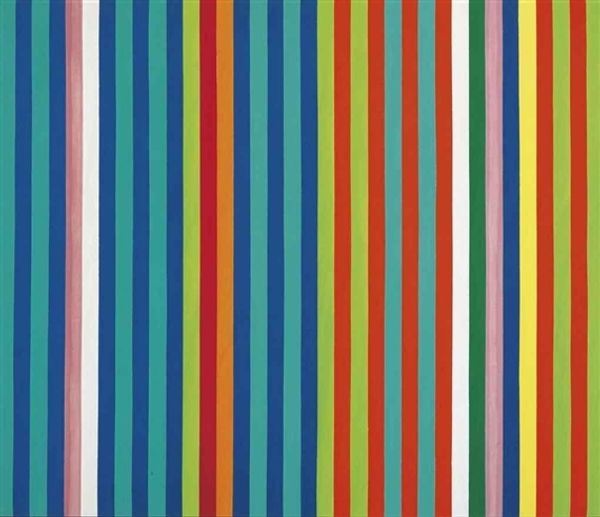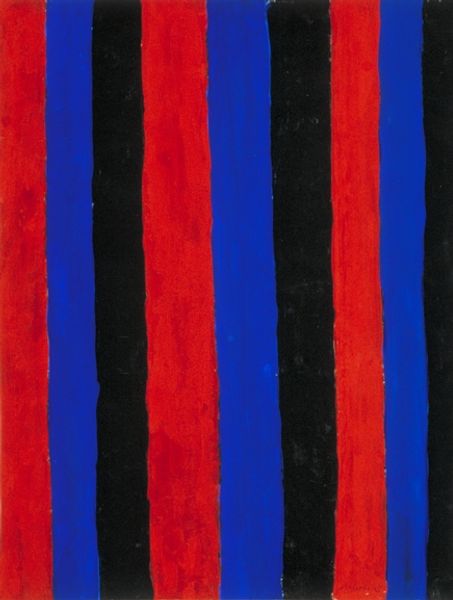
Copyright: Karl Benjamin,Fair Use
Curator: Karl Benjamin's "#20", dating to 1977. Benjamin worked primarily with acrylic on canvas, and he is associated with Color Field painting and Hard-edge painting. Editor: Immediately, the dominant element is undoubtedly the lines – these vertically oriented bands of undulating colors. They create such a palpable sense of rhythmic visual movement, despite the lack of any real depth. Curator: Right, that emphasis on color and flatness are characteristics aligned to those painting styles. In Southern California, during the mid-20th century, Benjamin engaged actively with a milieu pursuing new modes of abstraction. He notably taught art classes in public schools – thus extending the accessibility of the art movement. Editor: Yes, I also notice the juxtaposition between each of the color lines as well as each of the different thicknesses, which affects the flow for each line and throughout the painting. The variations really emphasize Benjamin's experimentation with visual language through color. Curator: Precisely. He taught for decades, significantly impacting a generation, demonstrating the influence and significance of these paintings beyond studio work. Editor: The deliberate combination, using matte, almost earth-toned colors adds this element of calculated restraint, which allows viewers to connect more deeply. These careful color combinations prevent the artwork from overwhelming, which is nice. Curator: I see Benjamin’s broader context as more than formal play. These compositions invite us to consider the post-war American embrace of the abstract and the bold, marking it with a West Coast stamp of optimism, and experimentation that's linked with educational reform. Editor: From my perspective, that focus on line, color, and spatial relationships, rather than on cultural elements, showcases Benjamin's investigation and exploration of new and modern perspectives on art itself. Curator: So in the end, Benjamin’s "#20" asks us to understand art's function as not just aesthetics but social interaction, too. Editor: And also encourages us to understand that the visual conversation speaks powerfully for itself, regardless of period.
Comments
No comments
Be the first to comment and join the conversation on the ultimate creative platform.
